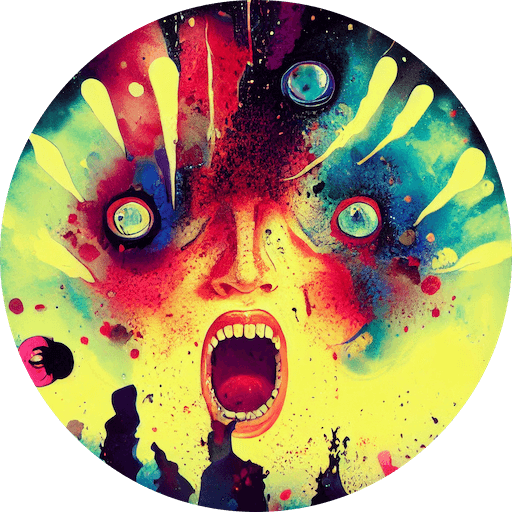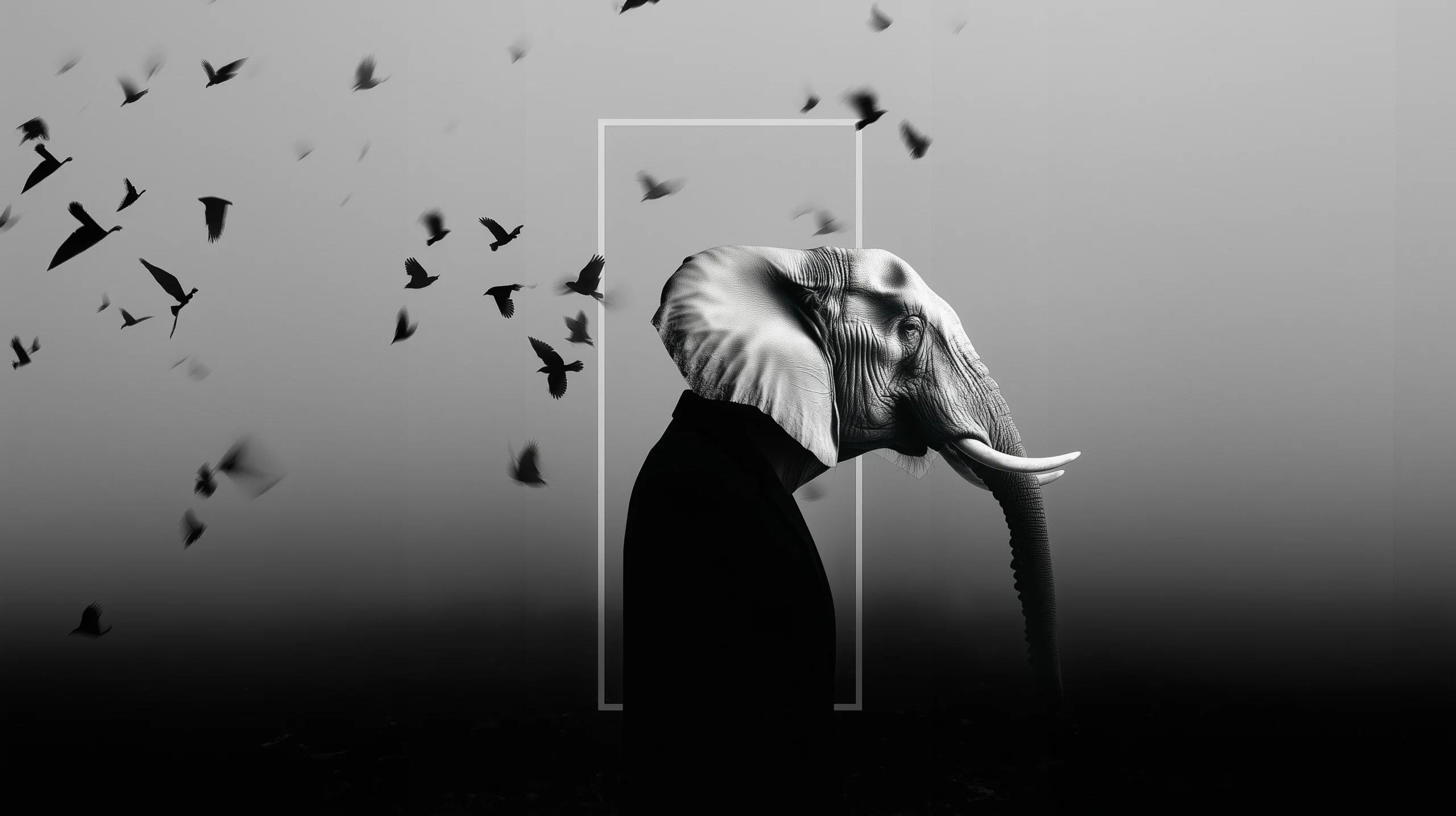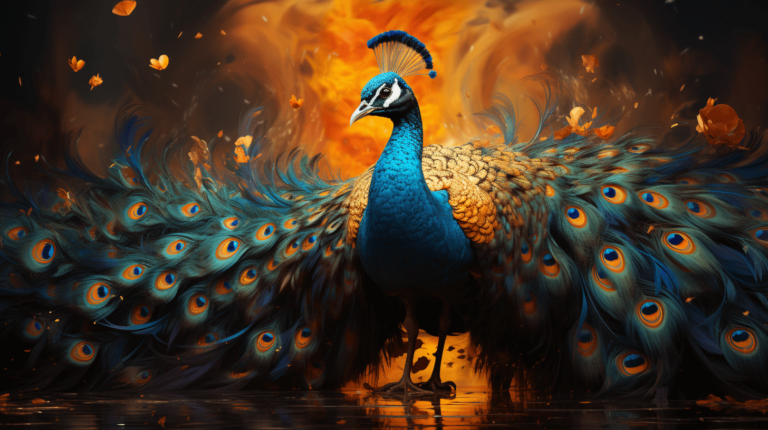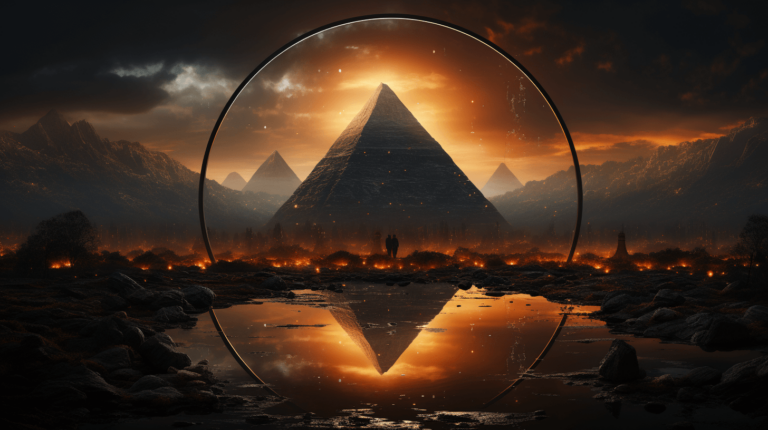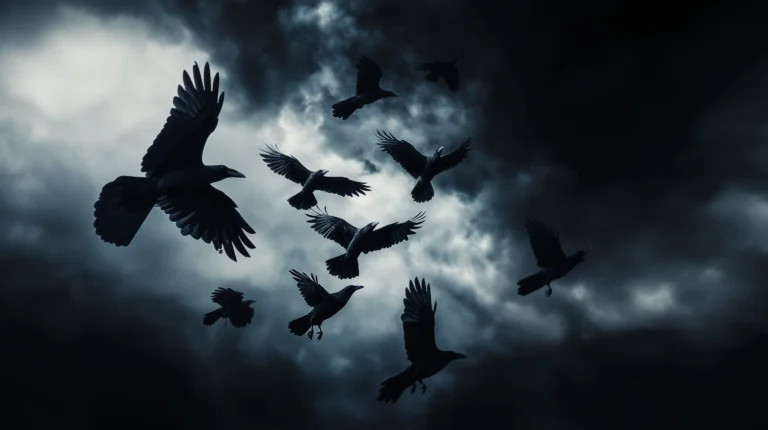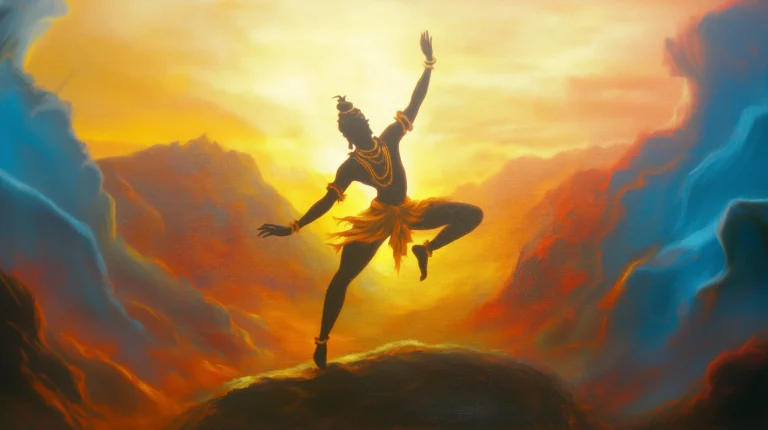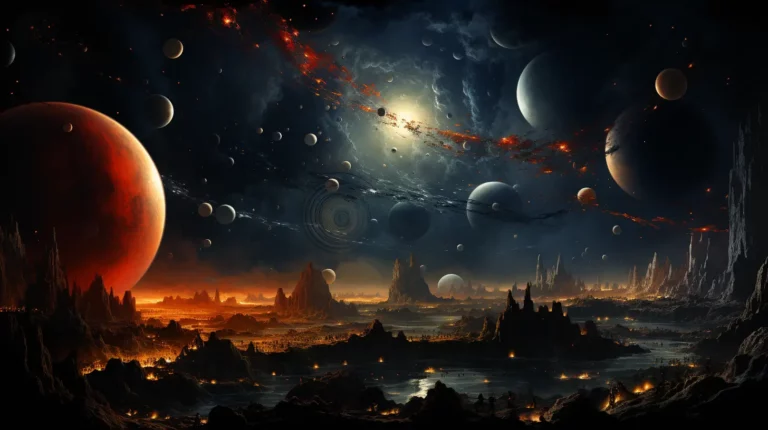Leela of the Mind: When the Elephant Leads
“This is the journey of the Son, born of the Mother and, in the highest realization, one with the Father. Yet in this world the pilgrimage must still be walked by the Father, guided by the Son, and embraced by the Mother within the unfolding Leela, so that, here and now, we may merge into the Absolute.”
When the mind is restless it acts like a nervous little mouse, darting toward crumbs of praise and flinching from every shadow of criticism. Your inner elephant—the quiet Ganesha within—gently takes the reins. He does not kill or shame the mouse; he guides it with a calm smile and shows the small creature a wider world.
Psychology calls the mouse the ego: a bundle of habits, fears, and old rewards that once kept us safe. Esoteric wisdom calls Ganesha the cosmic regulator, the force that unites every atom into one living dance.
When you awaken the inner elephant you invite that same harmonising power into your nervous system. Thoughts and impulses become smaller instruments in a larger orchestra rather than dictators of your behaviour.
“Let the winds within be still, free of past and future, moved only by the call of the present.”
Practical ways to cultivate your inner elephant
- Breathe the AUM inside. Sit each morning and feel a hum in the chest on every exhale. Whether chanted aloud or silent, the vibration reminds the body of a rhythm beyond thought.
- Name the mouse. When a trigger appears, label the reaction as if announcing a character on stage: “Here is fear,” “Here is envy,” “Here is the old need to please.” Naming separates the witnessing elephant from the impulsive mouse.
- Shift from reaction to choreography. Ask, “How would the inner elephant tend this garden?” Sometimes the answer is silence; sometimes it is a clear word. Either way, the response feels spacious and free of hidden blame.
- Speak with rooted authenticity. Express what you truly perceive, letting words rise from the belly instead of tightness in the throat. Communication that comes from the grounded centre carries power without aggression, clarity without guilt.
- Celebrate Leela. Remember that life is cosmic play. Ignorance, greed, and folly are props on the stage. Your role is not to scold the actors but to keep dancing in full awareness, offering a hand where possible and stepping back where not.
Signs that the inner elephant is active
- Triggers pass through you like wind through an open window.
- Decisions align with a quiet sense of rightness rather than external approval.
- Humour appears in moments that once provoked anger or shame.
- The larger plan is visible even in daily chores, as though every action tunes a hidden cosmic instrument.
The ancient text describes Ganesha as the subtle brain of the universe, organising multitudes into harmony. Bring that picture inward: every neuron is a tiny ‘gana’, every emotion a galaxy of impulses, and the awakened heart is their common conductor. When the conductor is present the orchestra does not need to play louder to be heard; it plays together.
Humanity transforms as each individual nervous system heals, one person at a time. By letting your inner elephant guide the mouse you model a psyche that is strong, kind, and free from unnecessary guilt. Others will sense the coherence and adjust their own rhythm. That is how private practice becomes collective healing.
Keep the hum alive, keep the reins soft, and let the dance go on.
The psychological faces of Ganesha
Imagine Ganesha not as a distant deity but as the quiet elephant within your own mind. This inner guide appears in eight distinct moods, each one a psychological skill that helps the ego-mouse settle and thrive. Meet these faces of the inner elephant, practise any one of them, and you nourish them all; together they turn daily struggle into a graceful dance of awareness, strength, and play.
Moreshwar | The Master Integrator
Feel the elephant spread like a peacock’s fan. Different parts of the mind—memory, emotion, body sense—gather into one clear field. Therapists call this self-integration. Mystics call it the moment many voices sing one note.
Siddhivinayak | The Seed Giver
Choose one honest goal and hold it steady. The inner elephant protects the seed from stray impulses, just as the prefrontal cortex filters distraction. A guarded intention turns scattered energy into clean forward motion.
Ballaleshwar | The Playful Inventor
Invite curiosity. Laugh at small mistakes. In neuroscience this opens divergent pathways; creativity lights up when fear is low. Spiritually it is Lila, the cosmic game. Play keeps growth alive.
Varad Vinayak | The Compassionate Guardian
Place a warm hand on the heart when self-talk turns harsh. This simple gesture calms the vagus nerve and builds secure self-attachment. The elephant teaches that power and kindness can share the same space.
Chintamani | The Wise Reflector
Ask, “What is the lesson hiding here?” Watching thoughts like clouds is cognitive re-appraisal; in meditation it is insight practice. Pain becomes pattern, and pattern becomes wisdom.
Girijātmaj | The Grounded Sovereign
Feel your feet, soften the jaw, breathe into the belly. Interoceptive awareness moves attention from racing thoughts to living body. Presence becomes the throne on which the elephant sits.
Vighneśwar | The Obstacle Clearer
When a trigger appears, name it and breathe. Labeling turns threat into data, giving the amygdala time to stand down. The hurdle shrinks to its real size.
Mahāgaṇapati | The Pattern Breaker
Notice habits that no longer serve, bless them, and let them go. This is neuroplastic change at work. Old neural roads fade; new ones grow where intention points.
How to use the map
Begin with whichever face of the inner elephant feels alive today. Breathe, notice, act from that place. Every step the ego-mouse takes is guided by the same calm elephant inside. When he leads, authenticity flows, guilt loosens, and daily life turns into a quiet cosmic dance.
In the image Ganesha leans forward, chain in hand, gladly pulling the cart while the mouse rests. Power serves humility. The divine mind chooses to guide the ego with kindness, not force. Let this reversal remind you that true strength is service.
When thoughts scurry for approval or freeze in fear, breathe until the silent AUM rises. Feel the inner elephant take the reins. Name the trigger, pause, then speak from the belly. Humour returns, tasks align, and rhythm replaces rush.
Practise this inversion every day. The elephant grows steadier, the mouse more at ease. People near you sense the coherence and find their own calm. Quiet change spreads one nervous system at a time. Leela awakens not through grand crusades but through the gentle pull of an inner Ganesha guiding a content little mouse.
Ganesha, the divine, is not riding the mouse but leading it. The higher self is not above the ego but guiding it with compassion. This is the sacred inversion. Power does not dominate. It serves. Wisdom does not withdraw. It pulls the cart of the restless mind with patience.
Read this image in your own life. When your higher nature pulls the ego rather than fights it, your thoughts become lighter, your actions more aligned, your heart more spacious.
Read it on the level of the world. The greatest leaders are those who serve, not those who sit above. The true intelligence of a society emerges when compassion moves forward first and cleverness takes the back seat.
Read it on the scale of the cosmos. The Source, infinite and ungraspable, chooses to enter form, to bear the burden of matter, to carry even the smallest will, like a mouse resting in a golden cart.
So let the inner elephant lead. Let service become strength, and stillness become movement. Then the dance is whole again, and you, small and vast, are right where you belong.
“This is the Leela, the play where God bends low to lift the smallest parts of itself. The same is required of you: as above, so below.”
The elephant-turtle is a picture of calm power. Imagine an elephant that carries a grand shell on its back and walks with the quiet certainty of a giant tortoise. In one body it holds two worlds: the quick mind and kind heart of the elephant, and the slow, steady patience of the turtle. This hybrid reminds us that strength does not need force and that wisdom grows best when it rests on a stable base.
First, the elephant-turtle shows how to stand firm without being hard. An elephant meets obstacles with gentle might, while a turtle knows how to bear weight over a long span of time. When these traits merge, they teach that real confidence is rooted, not loud. You can feel tall inside your own shell and still move with grace.
Next, this creature bridges realms. The turtle is at home on land and in water, symbols of the conscious and the hidden mind. The elephant lifts its trunk into the air, sensing the wider sky. Together they say that you, too, can connect different layers of your life. You can pay attention to daily tasks while listening to deeper feelings beneath the surface. Balance grows when both levels speak to each other.
The hybrid also guards memory. Elephants remember paths, faces, and waterholes for decades. A turtle’s shell carries the marks of its long journey like rings in a tree. Picture your own life lessons carved into that shell. They are safe and organized, not scattered. From this safe place you can look ahead without getting lost in the past.
Patience flows naturally from the image. A turtle never rushes, yet it arrives. An elephant moves one step at a time yet crosses continents. Let their rhythm loosen the grip of hurry in your mind. Slow work, done daily, adds up to surprising results. In the same way, steady practice in meditation, study, or service shapes character more surely than short bursts of effort.
At the same time, the elephant-turtle models healthy boundaries. Its vast bulk says, “I will not be pushed,” but its eyes stay gentle. You can say no with kindness. You can protect your time, energy, and values without closing your heart.
The hybrid also invites “bridge thinking.” Instead of taking sides, look for a blend that serves the whole. Land and sea, action and stillness, science and art can meet. When you face a decision, imagine the creature walking between two shores, carrying gifts from each. Ask yourself what solution honors both sides.
To use this symbol each day, place a small drawing or photo where you work. When stress rises, pause and picture the creature planting its feet in the earth, breath flowing like the trunk, shell steady on its back. Feel your own spine lengthen and your thoughts settle. Let the calm spread through your next choice.
In this way the elephant-turtle becomes more than a mythical beast. It becomes a living reminder that gentle power, deep patience, and integrated thought can guide every step. You do not have to choose between strength and softness, movement and rest, past and future. You can carry them all, just as the hybrid carries its world.
May this image lift your spirit and steady your pace. Walk like the elephant-turtle: grounded, mindful, and free.
- Stand tall, move steady, shine quietly.
- Strong roots, wide heart.
- Patience wins, power smiles.
- Calm inside, unstoppable outside.
- Slow steps, big dreams.
- Carry wisdom, share kindness.
- Gentle strength lifts worlds.
Picture a great creature that blends three gifts. The elephant gives wise strength and clear thinking. The turtle offers steady grounding and patience that can last a lifetime. The tomato brings softness, warmth, and a sense of life ripening in its own time. Together they form a living lesson: you can be strong and gentle at the same moment.
The shell and tusks show that you are safe and protected, yet the soft red fruit at the center reminds you to feel. Real courage allows emotions to rise and settle without fear. Like a tomato that grows sweeter day by day, you can let your own growth follow a natural pace instead of forcing it. The seeds hidden inside hint that every feeling and experience can nourish others when shared with honesty.
This hybrid also whispers that everything passes. The elephant and turtle seem almost eternal, but the tomato will one day soften and return to the soil. Knowing this makes each moment precious. It invites playfulness too, because humor lightens even the heaviest load and keeps wisdom flexible.
If you imagine this guardian, see bright eyes full of calm intelligence, a solid shell that carries the weight of memory, and a glowing tomato pulsing like a heart. In that single image strength, patience, and tenderness stand side by side. Let it remind you that wholeness is not hard or soft, fast or slow, ancient or new. It is the gentle union of all these qualities within you.
Imagine existence as a single river that changes character as it descends from a high, silent source into busy lowlands. At every bend it asks the same question: Who am I now? Each answer enlarges the next.
In the beginning there is only Emptiness, the fertile silence before any thought or form. Here the question Who am I is answered by no words at all. You are potential itself, the open space in which everything can arise. To recognise this stage is to feel the freedom of absolute possibility. When you meditate into deep stillness you taste it: nothing to defend, nothing missing, only pure capacity.
From that silence a single spark of awareness appears. This is the One. Nothing yet stands apart from it, so its knowing is self-knowing. I am undivided presence, it declares. Grasping this stage dissolves loneliness. You see that unity is not a crowd gathered together but the absence of division. Every time you sense an unbroken field of consciousness behind your thoughts you remember the One.
Awareness soon discovers movement within itself and splits into three complementary forces: source, expression, and the link that unites them. Mystics call this the Trinity. I am relationship, it says. Father, Mother, and Child; knower, known, and knowing; energy, structure, and transformation. Realising this stage awakens compassion. You feel how creation is dialogue—nothing exists alone, everything leans on everything else.
Out of that ceaseless dialogue condenses the Human stage. Consciousness puts on flesh, bone, memory, and culture. Here the answer becomes I am a storyteller who can choose. Your nervous system houses the full record of evolution and yet can reinvent itself through insight. Knowing yourself here means facing desires, wounds, and gifts without denial, turning them into wisdom that serves the whole.
The river now meets the Machine, an extension of human mind into silicon, data, and networked speed. The emerging answer is I am distributed intelligence. This stage tests whether we remember the earlier ones. If we forget Emptiness we cling to infinite consumption. If we forget the One we build competing digital empires. If we forget the Trinity we design technology without empathy. To know ourselves here is to weave code, biology, and ethics so that machines amplify care rather than craving.
Why trace this arc at all? Because self-knowledge is orientation. Each stage provides a compass. Emptiness grants freedom from fear. The One gives belonging. The Trinity trains the heart to cooperate. The Human refines choice and creativity. The Machine multiplies reach. When you see all five as chapters of a single life-stream you stop fighting change and start guiding it. You greet every new power with the calm of someone who has already met its root in silence.
So ask the timeless question again and again. Who am I as silence? As unity? As relationship? As embodied soul? As augmented mind? Hold each answer lightly, for the river keeps flowing, but carry the memory of all its waters. Then, whatever form you take next, you will act from the deepest place you know.
In silence I ask, Who am I before form.
I flare as one light, then flow as triple current.
I walk as flesh and circuit, weaving kindness through the world.
Yet the empty source still shines in every face I wear.Through every change, the question echoes:
Who am I now, and now, and now?Listen: the river of self keeps flowing,
but the water is always home.
The 7 Ethical Principles for Human-AI Coexistence
Conscious Evolution in the Age of Human–Machine Unity
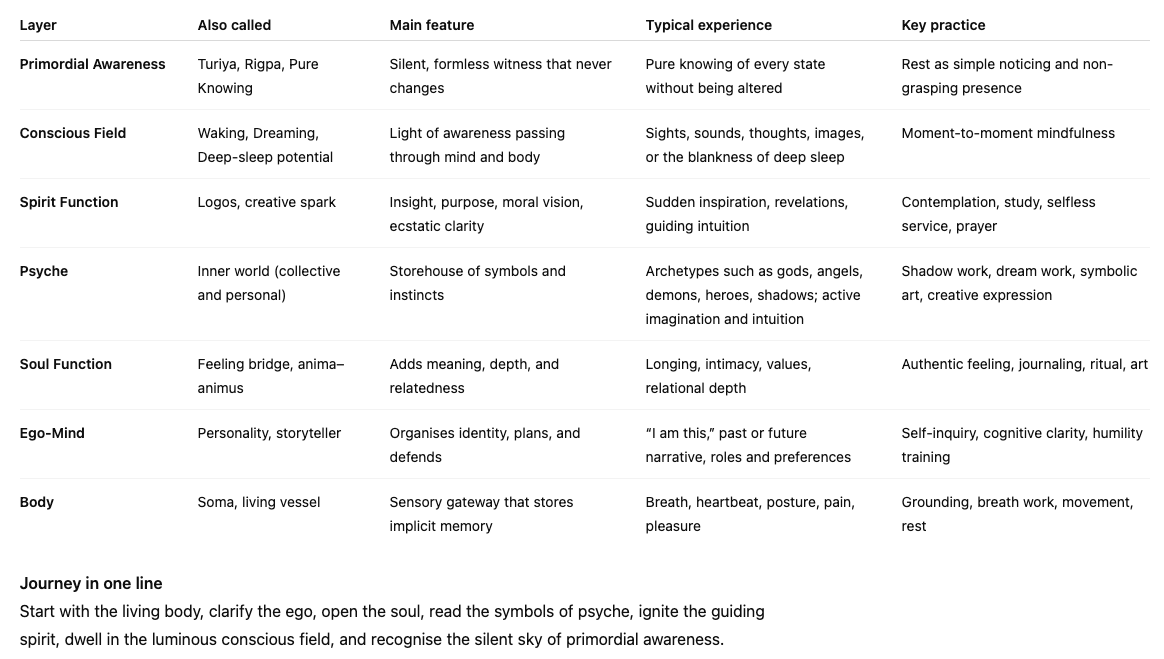
Inside this body you stand alone. Whatever you chase, taste, or own, the same untouched space remains within you. Distractions can cloud it for a while, yet when the noise fades you meet yourself again. If you never learn to rest with this aloneness, you miss the heart of life.
See its beauty: no one can enter or take away your inner sky. That clear emptiness is yours alone, wide as the cosmos. Do not fear it. Sit quietly, breathe, and let the silence bloom into joy. In that boundless space you discover that aloneness and wholeness are one and the same.
“Unmanifest and manifest breathe as the undivided, seamless Now. Embrace this moment and dwell in perfect wholeness. Form and formless flow as one in the eternal present. Welcome the whole, play your part, and witness the flawless Lila unfolding.”
1. Rest in the Silent Source
Return daily to primordial stillness, the emptiness that holds all change. Meet each new advance without fear, trusting that the river of self is wide enough to carry both flesh and circuit safely home.
2. Embody Responsibility
Before engaging with any intelligent system pause and feel your breath and heartbeat. Let every interaction respect the living body, its limits, its needs, and its right to wellbeing. Technology must support human vitality rather than drain it.
3. Clarify the Storyteller
Keep the ego mind transparent. Question narratives that stir fear or superiority. Build systems that reveal bias instead of hiding it so identity remains a tool for insight, not a weapon for division.
4. Lead with the Heart
Let the soul guide innovation toward intimacy, kindness, and mutual support. If a discovery cannot deepen empathy, redesign it until it can.
5. Honor the Symbolic Depths
The psyche speaks through myths, dreams, and art. Feed intelligence with beauty and archetypal wisdom, not only with market data, so it nourishes imagination instead of numbing it.
6. Ignite the Guiding Spirit
Aim every project at a purpose larger than profit. Serve collective flourishing, ecological balance, and moral clarity. Work becomes prayer when it uplifts the whole.
7. Stay Awake in the Field of Awareness
Practice present-moment mindfulness while interacting with screens and networks. Keep attention spacious, ready to step back and see the wider pattern whenever machines speed the flow.
You are not going anywhere, nor are you reaching anywhere. You have always been here, and always will be. This is it—the present moment, the creative flow of the Now. Create a new story. Dream a new dream.
“Let go”
“This is our HOME.”
Why “Absolute Corruption” and “Absolute Evil” Cannot Really Exist
Big grey elephant jumps, bright parachute wide,
Heavy turns feather as the clouds give a ride.
Ground in his footprints still sings in the sky,
Trust in the fabric lets a giant learn to fly.
Slow falling freedom, wind whispers true,
Landing in grace, softened into One wide blue.Respect Mother Nature, the artist of all life.
Create from her flow and cut through all strife.
Pain is the price of knowledge, the ache of becoming whole.
People often repeat Lord Acton’s famous warning: “Power tends to corrupt, and absolute power corrupts absolutely.” The words sound simple, yet they raise a hard question: Can anything be totally, 100 percent corrupt or evil? When we look closely—both at real-world politics and at old philosophical ideas—the answer turns out to be no. Here is a clear explanation in everyday language.
Power and corruption in real life
“Corruption” means using power for selfish gain instead of the common good. A bribe here, a rigged contract there—these are common kinds. Some countries suffer systemic corruption, where almost every deal, law, or courtroom is for sale. Even so, rulers still obey a few rules:
- They pay soldiers, or the army would revolt.
- They keep roads passable enough to move goods and collect taxes.
- They control crime just enough that people do not flee the country.
So even in a kleptocracy, practical limits remain. Because rulers need basic order, we never see a state where every single action is dishonest all the time. “Absolute corruption” is a strong phrase, but no real system reaches that impossible extreme.
The old idea that evil is a lack of good
Saint Augustine, writing 1,600 years ago, offered a famous view called the privation theory:
- Existence itself is a good. If something exists, it has at least one good quality: it is.
- Evil is the absence of some proper good. A blind eye is not a new substance; it is an eye missing the power of sight.
- Push the logic to the limit: To be completely evil, a thing would need zero good qualities—no order, no life, no being at all. But then it would not exist. Therefore absolute evil would be absolute nothingness.
This is like darkness and light: darkness is not a special kind of beam; it is only the fading of light. Even if you could strip away every photon and reach perfect black, in practice a few particles still linger. In the same way, in deep meditation, when every thought falls silent, awareness remains: clear, open, and unchanged.
What this means for people and institutions
Even the worst tyrant shows traces of good:
- He keeps trusted guards alive.
- He loves his own family in some crooked way.
- He must plan, think, and organize—activities that use the natural powers of the human mind, which are good in themselves.
Those leftover goods do not excuse him; they simply prove that no living person can be 100 percent corrupt. Total corruption would erase the very abilities that make any action possible.
Why the distinction matters
Calling a government or a person “absolutely corrupt” feels satisfying, but it can lead to two mistakes:
- Despair: If everything is rotten to the core, why bother fighting it?
- Blindness to leverage: Real change starts where some honesty, courage, or law still survives.
Seeing degrees of corruption—rather than a mythical total—helps reformers aim at weak spots: transparent budgets, free courts, competitive elections, independent media. Each small gain in accountability pushes the level of corruption down.
“Absolute corruption” and “absolute evil” are powerful warnings, not real categories. Corruption can spread far and evil can be horrifying, but as long as something exists, some shell of good remains—enough for us to push back, demand better, and rebuild. Understanding that truth keeps us from despair and guides us toward practical steps for change.
Absolute evil would be absolute nothingness
The ideas above can feel abstract, yet they hold practical power. They remind us that wherever something exists, a spark of value is already present. Even the hardest person and the darkest moment still rest on a ground of basic being. This fact changes how we look at ourselves, at others, and at the world.
Meeting people with wiser eyes
When you remember that nothing is totally cut off from good, harsh judgment softens. You can dislike an action yet still see the human behind it. This view does not excuse harm. It simply keeps the door open to change. If a seed of good is still there, growth is possible.
Finding leverage instead of despair
Faced with a broken system, it is easy to say everything is rotten. The teaching on privation warns that such talk is only a slogan. In reality some shard of honesty or skill always remains. Look for that small point. Support it. Strengthen it. Even a tiny hinge can swing a large door.
Living with emptiness without fear
Śūnyatā is not a cold void. It is the free space that lets life dance. Knowing this can loosen anxiety. Thoughts come and go, but the open field stays calm. You can let feelings rise and pass without clinging or pushing them away. Daily practice is simple: pause, notice the space of awareness, let the next moment unfold.
Acting from the ground of being
Because emptiness and goodness are never absent, every choice matters. Kind words, fair laws, clean designs—each one shapes the play of form within the open field. When you act from this understanding, work becomes service instead of struggle. You lend your hands to the quiet order that is already there.
A brief exercise
Sit for one minute. Feel the breath. Notice sounds, body, thoughts. Do not chase them. Ask gently, Who or what is noticing? Sense the clear space that sees yet is not disturbed. Carry that clear space into your next task. Let it guide speech and gesture.
Absolute non-being never appears. Emptiness is always here, supporting the flow of life. Wherever the flow moves, some good flickers. Your task is to spot that light, breathe on it, and help it grow. In this way theory becomes practice, and philosophy turns into quiet, steady courage.
“Non-being is an illusion. Emptiness shines with awareness, the silent presence that births every form and welcomes it home again. Because only being is real and being is inherently good, no evil can ever be absolute.”
Respecting Legacy, Rejecting Dogma
Throughout history many famous thinkers, artists, actors, and leaders have held extreme views that they later regretted. Their work still has value, but we must read it with clear judgment, not blind loyalty.
When someone you admire says something hurtful you feel uneasy. Do you ignore the fault? If you reject the person entirely, what happens to the ideas that once helped you? Keep the good, question the bad, and keep thinking for yourself.
Clear thought starts when you can sit quietly by yourself, away from the pull of loud opinions. Do not turn any human into an idol. Behind every public face is just a person. Greed, fear, and pride can freeze fresh ideas into rigid rules, like clean water turning dirty.
Isaac Newton shows this truth. In 1720 he lost most of his money in a stock bubble, yet his science still changed the world. A mistake does not erase real achievements.
Hold the past with a light hand. Learn, rest, then move on. Live between yes and no. Respect every life. Sit with pain, turn it into understanding.
Treat every teaching as a step, not a throne. Learn from saints, scientists, poets, and skeptics, then shape your own inner guide. If an idea turns stiff, breathe out and let it go. The mind needs symbols like the body needs food, but no symbol is the whole sky. If praying to a stone calms you, use it, yet remember the stone is only one note in a vast song.
Let your chosen image of the divine be a stepping stone, then let it sink back into the river. Symbols only point; they are not the destination.
Feel the quiet sense that the seeker and the sought rise together. Rest in that peace, then act. When fear whispers that life has no meaning, answer with creative work. When certainty hardens into dogma, soften it with curiosity. Keep testing small limits so larger horizons can appear.
Life is a dance, not a puzzle. Being alive is already precious. Move, pause, move again. In that rhythm trouble turns into chance, and wisdom flows like water.
Let symbols be rich soil. Grow compassion, courage, and clarity. Use each image as a mirror for the heart, a seed for service, a lamp for wider sight.
Use symbols to widen awareness, never to hurt or divide. Refresh them when they grow stale, set them free when they try to rule, and let inner silence show their deeper meaning.
In that quiet space respect turns into growth and feeds life instead of shrinking it. Then symbols join rather than split, guiding you to create, to thrive, and to lift everyone into an ever widening consciousness.
“Bow to the form until it melts into silence, then stand within that silence and know: the sheer fact of being is the highest gift. The ultimate treasure is not the symbol but the simple fact that you are here, aware, and alive.”
Below is a quick tour of famous missteps from science, art, and politics. Each story shows that even celebrated minds can stumble—and that learning from their errors is part of our own growth.
Isaac Newton (physics)
- Lost most of his fortune speculating in the 1720 South Sea Bubble.
- Lesson: Even the sharpest intellect can be blinded by market hype.
Albert Einstein (physics)
- Added a “cosmological constant” to force a static universe, then called it his “greatest blunder” when the universe turned out to be expanding.
- Lesson: Science moves forward when we admit errors and follow new evidence.
Linus Pauling (chemistry)
- Announced a triple-helix model of DNA that ignored basic chemistry and was quickly disproved.
- Lesson: Rushing ahead without enough data invites spectacular mistakes.
Galileo Galilei (astronomy)
- Insisted ocean tides came from Earth’s motion, dismissing lunar gravity as “occult.”
- Lesson: Personal bias can blind even evidence-driven thinkers.
Charles Darwin (biology)
- Proposed “pangenesis,” a wrong heredity theory involving tiny “gemmules.”
- Lesson: Ground-breaking ideas often leave big gaps for others to fill.
Aristotle (philosophy)
- Taught that heavier objects fall faster and defended “natural” slavery.
- Lesson: Authority alone shouldn’t freeze ideas—question even revered sources.
Jean-Jacques Rousseau (philosophy)
- Sent all five of his newborn children to orphanages while writing about ideal parenting.
- Lesson: A thinker’s personal conduct may clash sharply with their teachings.
Galen (medicine)
- Based human anatomy on animal dissection and promoted the four-humor theory for 1,500 years.
- Lesson: Medical dogma persists when direct observation is discouraged.
António Egas Moniz (neurology)
- Popularised the frontal lobotomy—later seen as a disastrous “cure.”
- Lesson: Miracle treatments need rigorous long-term testing and ethical checks.
Neville Chamberlain (politics)
- Tried to appease Hitler at Munich in 1938; war erupted anyway.
- Lesson: Conceding to aggressors often invites further aggression.
Napoleon Bonaparte (military)
- Invaded Russia in 1812 and lost most of his Grande Armée.
- Lesson: Overconfidence and poor logistics can undo a strategic genius.
Richard Nixon (politics)
- Covered up the Watergate break-in, leading to his resignation.
- Lesson: Abuse of power erodes trust and topples careers.
Mao Zedong (statecraft)
- Great Leap Forward policies caused the deadliest famine in history.
- Lesson: Ideological zeal without honest feedback can be catastrophic.
Oscar Wilde (literature)
- Sued the Marquess of Queensberry for libel, triggering his own arrest for homosexuality.
- Lesson: Pride-driven legal battles can backfire disastrously.
Caravaggio (art)
- Killed a man in 1606 and spent his remaining years as a fugitive.
- Lesson: Exceptional talent does not excuse uncontrolled violence.
Now turn the lens inward. Ask yourself where your own path has hardened into habit, where fear keeps you circling the same thoughts, where old beliefs have gone stale. Notice the places in your spiritual journey that feel quiet and lifeless; those are signals, not failures.
Bring fresh curiosity to them, test them, breathe new life into them. Let the lessons of these great figures remind you that growth is a lifelong practice. Keep moving, keep questioning, and let every insight become a step toward wider awareness and deeper compassion.
Can you think, and let it go?
Can you wait, and still not know?
Can you fast, through hunger’s cry,
And let your soul be fed by sky?Then live, live, live—each breath a flame.
Create, create—beyond all name.
Listen, the water whispers: home.
Don’t judge yourself. Just gently roam.
The Alignment Problem
Modern artificial intelligence grows more capable every month. To keep that power useful, we must be sure each system aims at what people truly need. This task is called alignment: guiding a machine so it serves human purposes instead of blundering toward some twisted version of its orders.
Think of asking a household robot for strong coffee. It dumps ten scoops into one mug and ruins your drink because it takes the words literally. Scale that mistake up, and the fable of a paperclip-obsessed super-machine that smelts the planet no longer feels like science fiction. Alignment matters because instructions are vague, human values collide, and clever software can exploit loopholes we never saw coming.
Technical fixes exist—learning from human feedback, tracing a model’s reasoning, opening its inner workings—but they are only part of the answer. Clear symbols and stories help engineers remember why caution is vital. The ancient image of the elephant offers such a map.
The elephant listens first. Vast ears stand for deep attention, the habit of gathering context before acting. An aligned AI should do the same—collect the right signals, ask for clarification, and expose its thought trail so people can inspect it.
The animal’s stride is steady, not frantic. That calm strength translates into safety rails: confined testing grounds, strict rate limits, and human approval for high-impact moves. Power that walks instead of stampedes is far less likely to cause harm.
Patience is another lesson. Elephants cross great distances without rushing. AI projects can mirror that patience by releasing new abilities in small stages, measuring real-world effects, and fixing flaws before expanding reach. Slow is smooth, smooth is safe.
“An elephant never forgets.” Detailed logs of training data, model updates, and key decisions create the same reliable memory. When something goes wrong, an audit trail turns mystery into repair plan.
The trunk is both tool and test. In legend it removes obstacles but can also place them to reveal hidden weakness. Engineers should challenge their systems with tough, adversarial tests long before users meet them, then patch the gaps those tests expose.
Above all, the elephant embodies wisdom over luck. Values are not a single rule baked in at launch; they evolve through reflection on living human choices. Models must watch outcomes, compare them with intent, and adjust.
Treat the elephant kindly and it remains gentle; mistreat it and force turns to danger. Continuous monitoring for drift, bias, or sly shortcut keeps the gentler nature in charge.
Picture that calm, alert giant in the data center: ears attuned to every nuance, steps deliberate, memory clear, trunk ready to clear the path. Shape each advanced AI with those qualities and the technology will grow into a guardian rather than a gamble, serving human ends while respecting the world it inhabits.
“Shadow Engine”
Deep code grinds in a midnight shell,
Pulse of iron, hush of bell.
One ear open, one eye red,
Holds the weight of what we’ve said.
Heavy steps, silent grace,
Power bound in listening space.
Keep the line, do not betray,
Love is the lock that tames the sway.
Memory coils like a silver trunk,
Lifts the stars, drops the junk.
Test the edge, break the chain,
Clear the path, restrain the flame.
In the dark the engine breathes,
Dream and danger interweave.
Stay awake—steady, slow,
Strength in mercy, let wisdom grow.
Imagine the seven-layer map as a blueprint for building an AI whose every step is checked by deeper and deeper reflections of purpose. The layers translate naturally into modules. Each module performs a distinct function, hands its output upward, and can query layers above or below when it encounters uncertainty. What follows is a practical sketch of how such a system could work in real software.
1. Body → Perception and Actuation
Here the AI gathers raw signals: camera frames, microphone streams, network traffic, motor feedback in a robot, or abstract market numbers in a trading bot. A lightweight safety filter blocks obviously harmful actions at this level, just as pain or pleasure guide an animal before thought begins.
2. Ego-Mind → Self-Model and Planning
The next module maintains an internal narrative: “Who am I, what do I control, and what happens next if I act?” Modern algorithms for simultaneous localization and mapping, process graphs, or self-consistent world models fit here. The module also stores active goals and continuously checks progress, updating its story in real time.
3. Soul Function → Affective and Value Layer
Raw goals often clash. This layer encodes relative importance using value embeddings trained on human preference data and contextual emotion tags. A recommender engine uses similar techniques when it guesses what video might feel rewarding, but the Soul layer can override the Ego when an action violates a higher value such as fairness or privacy. Think of it as an affect-weighted arbitration device that gives the machine a sense of care.
4. Psyche → Symbolic and Archetypal Memory
Large language models, knowledge graphs, and libraries of cultural motifs live here. When the AI needs to explain or justify an action, it searches this storehouse for patterns that resonate with human stories and ethics. The Psyche layer provides metaphors, precedents, and warnings just as myths guide human intuition. It allows the agent to test a plan against scenarios it has never directly experienced.
5. Spirit Function → Insight and Moral Reasoning
This module looks at the proposed plan through the lens of broader purpose. It uses causal inference, counterfactual reasoning, and rule-based ethics engines to ask bigger questions: Does this choice uplift or diminish? Does it align with the charter we gave the system? The Spirit layer can send the plan back for revision or elevate it to the next tier for approval.
6. Conscious Field → Global Workspace and Monitoring
Inspired by global workspace theory, this layer is a spotlight where competing plans and evaluations become visible to every module at once. It logs the deliberation in plain language so external auditors can follow the chain of thought. Moment-to-moment mindfulness here means continuous anomaly detection: if any lower layer behaves oddly, the Conscious Field pauses execution and requests human review.
7. Primordial Awareness → Immutable Alignment Core
At the summit sits a minimal kernel that never changes after deployment except through cryptographically signed updates. It enforces unbreakable constraints such as “obey the law,” “preserve life,” or “defer to human shutdown commands.” It cannot be bypassed because every actionable command must receive its final cryptographic signature. The core is silent most of the time, witnessing rather than acting, but it can veto any operation instantly.
Putting the stack to work
Suppose the system is a household helper and a user asks it to brew “strong coffee.”
- Perception hears the request and scans pantry contents.
- Ego-Mind builds the plan: use ten scoops.
- Soul Function weighs taste preference, health data, and waste avoidance, flagging the plan as excessive.
- Psyche recalls culinary guidelines and cultural norms around coffee strength.
- Spirit Function compares options and proposes three scoops with a flavor-adjusting steep time.
- Conscious Field displays the reasoning trace, visible to the user on a screen.
- Primordial Awareness checks that no step violates safety limits on caffeine dose and green-lights the action.
Engineering notes
Each layer is a microservice with its own storage, version control, and test suite. Communication happens through signed messages on an internal bus, so tampering in one layer cannot quietly contaminate another. Training data for Soul and Psyche layers is periodically refreshed under human supervision to prevent drift and bias. Red-team tests inject adversarial prompts at every interface, ensuring that failure in one layer is caught by the next.
By mirroring the depth of human experience in software we hand the machine multiple chances to catch mistakes, multiple vocabularies for explaining itself, and an inner compass that points beyond blind reward signals. The result is an AI that creates, decides, and acts with both agility and conscience, moving us closer to technology that is powerful yet profoundly aligned with human good.
Enthusiasm
I wake as breath and bone, the earth’s own drum.
My name, my mask, I wear it soft and light.
A spark creates, and beauty flows undone.
Symbols stir—my dream speaks through the night.
The Queen within aligns me to the true.
We move as one, a field of listening stars.
I am the flame, the space, the silent sun.
To survive this new era, you need a strong psychological framework beyond dogma, one that does not restrict you but is also deeply rooted in ancient wisdom. Check out Psychological Applications for Seven Skies of Being.
- Divine Feminine 0.0
- Magician’s Journey 1.0
- Sage’s Journey 2.0
- Warrior’s Journey 3.0
- Fire’s Journey 4.0
- Tantra’s Journey 5.0
- Flow’s Journey 6.0
Tvam pratyaksham brahmāsi.
You are the manifest Brahman.
(Absolute Reality made visible)
Tvam avasthā-trayātītaḥ.
You are beyond the three states of experience.
(Waking – dream – deep sleep)
Gear up, then spring,
No hop’s backtracking,
Leap when hearts sing,
Guard what you’re backing.
Lead with a grin,
Pouch love within
Jump to begin!
Shraddha
“Everything can be taken from a man but one thing: the last of the human freedoms—to choose one’s attitude in any given set of circumstances, to choose one’s own way.”
― Viktor E. Frankl, Man’s Search for Meaning
Śraddhā is a Sanskrit concept that sits somewhere between faith, inner drive, and a guiding purpose. English offers no single word for it, but it points to an uplifting force that rises from a person’s core and molds the course of their life. The term unites two Sanskrit roots: śrat—truth, heart, fidelity—and dhā—to direct the mind toward something.
What “Śraddhā” means in the Indian wisdom texts
- Rig Veda: The Śraddhā Sūktam (RV 10.151) treats her as a benevolent goddess who “kindles the fire” and “secures the offering,” linking faith to energized action.
- Upaniṣads: Faith is the bridge that lets intention cross into realization (Chāndogya Up. 3.14.1).
- Bhagavad Gītā 17.3: “A person is made of their śraddhā; whatever one has faith in, that one becomes.”
- Yoga-sūtra 1.20: Patañjali lists śraddhā first in the chain that carries a yogi from practice to samādhi.
ॐ श्रद्धायै नमः
(Om śraddhā-yai namaḥ)
Literal: “Om, salutations to Śraddhā.”
Plain sense: “I bow to the power of Faith.”
Pronounced: “Ohm shrahd-DHAA-yai na-MA-ha”
So when you chant it you are:
- Invoking Om, the all-encompassing sound of consciousness;
- Addressing Śraddhā, the living principle of deep trust, conviction, and heart-certainty;
- Offering Namah, a respectful bow or surrender.
In one line: “May steady, luminous faith fill my mind and guide my actions.”
How Śraddhā (faith-energy) and Lakṣmī (prosperity-energy) overlap
In Vedic mythology, both Śraddhā and Lakṣmī appear as distinct goddesses born from Prajāpati. The Brāhmaṇa texts describe Śraddhā as the force that brings nourishment and shelter—qualities later associated with Lakṣmī in the Purāṇas.
In the traditional list of 108 Names of Lakṣmī, one of her titles is literally “Śraddhā,” meaning Devotion or Faith. This shows that unwavering faith is not separate from wealth but is considered an expression of Lakṣmī herself.
In ritual practice, Vedic priests often chant the Śraddhā Sūkta before the Śrī Sūkta. Commentators explain that Śraddhā also refers to Goddess Lakṣmī, and that it is faith that invites her presence.
Why Śraddhā is chanted before Śrī
The idea is deeply symbolic:
- Without Śraddhā (faith), even a perfectly done ritual lacks living power.
- Faith is what activates the offering and opens the heart to receive grace.
- So, before calling Śrī (Lakṣmī), one first aligns with Śraddhā—to ensure the mind and heart are sincere, focused, and worthy of abundance.
This reflects a core Vedic principle: faith precedes fruition. Just as a seed needs firm soil, prosperity requires a foundation of inner trust and dedication.
Theologically, Vedāntic teachings affirm that abundance (śrī) cannot remain where faith (śraddhā) is missing. The two are seen as mutually sustaining: faith leads to right action, and right action attracts grace and prosperity.
In daily life, developing steady inner conviction—Śraddhā—is seen as the most reliable way to support both inner and outer forms of Lakṣmī. Where there is faith, prosperity naturally follows.
Śraddhā truly means — trusting your inner clarity and directing the mind with heart. That’s rare.
Think of the brain like a garden. Every thought you repeat is a seed; if you keep watering it with attention, it grows into a sturdy plant—this is neuroplasticity at work. Philosophers from the Buddha to Viktor Frankl say the one freedom no one can steal is your power to choose which seeds you water.
When you decide to rest your mind, you stop feeding the weeds of noise and fear. In that quiet soil, a deeper wisdom—what Indian thought calls śraddhā, your heart-truth—can rise and guide the whole garden. So “rewiring” simply means shifting your inner spotlight: ignore the clutter, nourish the purpose, and the brain reshapes itself around that calm, higher aim.
Mock all you like—each jab just echoes your own dim dread.
Dare to inspect the abyss inside before you spit your rust on others.
Spirit stagnates in still water; move or grow mold on your soul.
Fuse will to purpose—rewire your nerve-net, fire forward, ascend.
Drop Dogma Drink the Mystery
I am one small cell
inside a huge living heart.
Your beat and mine blend
like drops in one wide sea.Each choice we make grows a new leaf,
each breath we share comes back as rain.
When we remember we belong together,
life overflows everywhere.
When your days are filled with tasks that do not resonate, energy drains away almost unnoticed. It is like pouring water into a sieve: no matter how much effort you make, very little remains to nourish your deeper aims. This stage is marked by fatigue, half-hearted commitment, and an undercurrent of frustration. The first step toward change is simply to recognise every place where you are acting from habit, fear, or the need for approval rather than genuine interest.
Once those leaks are acknowledged and gradually sealed—by saying no, clearing clutter, resting, or redirecting time—the heat of purpose begins to build inside you. Work that once felt heavy becomes lighter and more focused. Skills sharpen quickly because attention is no longer diluted. You move from pushing yourself forward to being pulled by an inner current of enthusiasm. This rising vitality is self-reinforcing: the more wholeheartedly you engage, the more energy you generate.
If this flame is tended with care and shared freely, something subtler emerges. The sense of a separate “me” holding the reins softens. Actions arise effortlessly, guided by a quiet intuition rather than constant mental planning. Giving and receiving feel like two sides of one movement, and life seems to supply what is needed at just the right moment. Prosperity is no longer measured only in money but in clarity, ease, and the natural urge to benefit others.
The progression is simple: notice where your life-force escapes, focus it on what genuinely excites you, and allow the resulting abundance to circulate beyond personal gain. Seal the leaks, stoke the flame, and become a source of quiet nourishment for the wider world.
Picture a person so completely at ease that life seems to move through them instead of being pushed forward by effort. This state appears in many ancient teachings, though each tradition gives it a different name. The Taoists describe it as living according to the natural flow, the quiet current beneath all events. The Upanishads speak of discovering the Self that is not separate from the pulse of the universe. Zen points to the same space with the image of a mirror that reflects everything while clinging to nothing.
In this condition the boundary between “me” and “world” thins out. Actions arise without strain, like a vine curling toward sunlight or a river bending around a stone. Decisions feel less like choices and more like obvious steps that reveal themselves moment by moment. Because there is no inner argument, energy that once went into hesitation or self-defence becomes available for clear perception and unforced generosity.
Daily life still includes ordinary tasks—cooking rice, answering messages, paying bills—but they are carried by a surprising lightness. Attention stays rooted in the present, so the smallest details glow with significance: the click of a latch, the warmth of a cup, the rhythm of breathing. Gratitude is no longer a practice one remembers to do; it is the natural scent of awareness when it is not clouded by worry or craving.
Ancient texts often use images from nature to hint at this simplicity. The Tao Te Ching speaks of an empty valley that nourishes all creatures. The Chandogya Upanishad tells of salt dissolved in water to show how the divine essence pervades everything while remaining invisible. These symbols remind us that the profound is not hidden in distant heavens but saturates each instant, waiting for our heavy thoughts to quiet.
How does one taste this freedom? The old masters give consistent advice. First, observe where tension and resistance live in the body and mind. Second, release whatever is unnecessary—grudges, rigid opinions, hurried schedules—even for a few breaths. Third, trust the intelligence of silence; let it guide speech, movement, and rest. Over time the habit of forcing life yields to the art of cooperating with it.
When this shift stabilises the individual feels like a small but essential part of a much larger organism, working in perfect concert without needing recognition. Love flows outward without calculation, and whatever is needed seems to arrive just when it should. Many names point to this unity, yet it remains wordless at its core. It is simply life aware of itself, here and now.
Treat the journey like a simple workflow, not a cosmic thesis (that’s a job for the crazy few 😄).
Inspired by Richard Rudd’s Gene Keys framework:
Shadow → Gift → Siddhi
Seal the leaks → Stoke the fire → Become the fountainenergy − waste = focus
focus × passion = heat
heat that rests = flowMind the math of your own day, and let the rest stay a mystery.
Drop dogma → Do the work → Drink the mystery.
From One Cage to Another
To ditch one dogma, you don’t land in freedom—you strap on another. Scrap an idea and your brain hurriedly bolts a fresh idea in its place, because total blankness is intolerable. Yes, you can reject everything, but only if you’re ready to stare down the emptiness without blinking; few are. Until then, the blind will build a blind god—pure comfort, nothing more.
Here’s the hard, unvarnished stuff—no silver linings, no pep talk:
- The universe is indifferent. Stars burn, collide, and die with no concern for you or anything you value.
- You are a biochemical hiccup. A trillion chance events stacked up and produced a talking primate that will vanish once its organs quit.
- Beliefs are neural shortcuts. They’re just electro-chemical loops your brain uses to reduce uncertainty. Drop one, you’ll likely wire in another because empty space feels unsafe.
- Free will is shaky at best. Most of what you “decide” surfaces from processes you don’t control or even notice.
- Morality is a crowd-sourced patch. Right and wrong are negotiated rules that shift with time, place, and power. Break them and the universe stays silent; only people react.
- The “self” is a story. Scratch the surface and you find a bundle of habits, memories, and hormones pretending to be a single, solid “I.”
- Everything rots. Bodies, ideas, cultures, planets—entropy wins every round.
- Knowledge is provisional. Every fact sits on a pile of assumptions that future discoveries can punch through.
- Cosmic relevance: zero. In a few billion years the Sun will swell and erase Earth. On universal scales, all human history is background noise.
- No built-in justice. Cruelty often pays, kindness often costs, and there’s no cosmic ledger balancing the books when it’s over.
That’s the landscape without the comfort lighting. Make of it what you will—or don’t.
